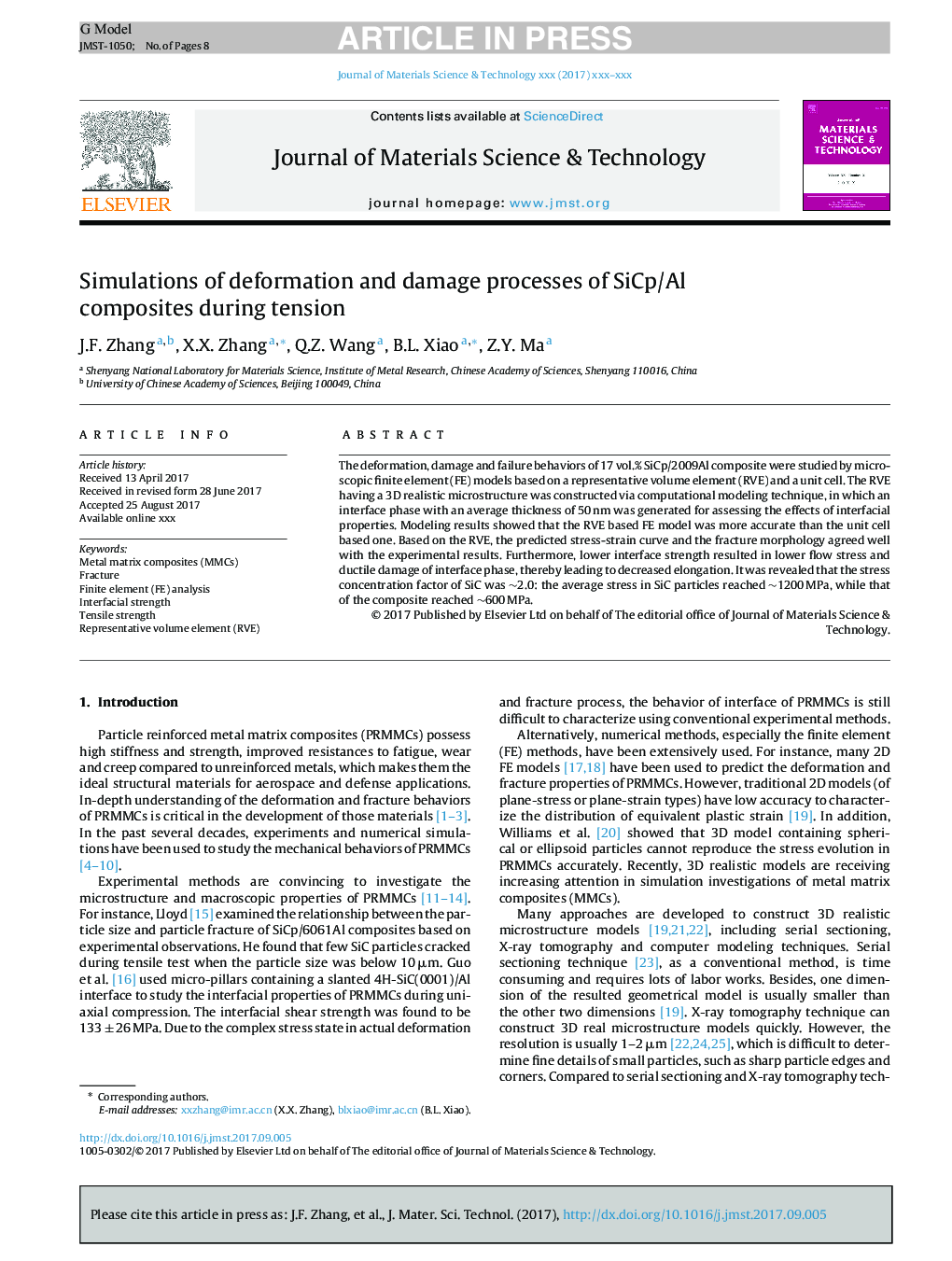| Article ID | Journal | Published Year | Pages | File Type |
|---|---|---|---|---|
| 7952012 | Journal of Materials Science & Technology | 2018 | 8 Pages |
Abstract
The deformation, damage and failure behaviors of 17Â vol.% SiCp/2009Al composite were studied by microscopic finite element (FE) models based on a representative volume element (RVE) and a unit cell. The RVE having a 3D realistic microstructure was constructed via computational modeling technique, in which an interface phase with an average thickness of 50Â nm was generated for assessing the effects of interfacial properties. Modeling results showed that the RVE based FE model was more accurate than the unit cell based one. Based on the RVE, the predicted stress-strain curve and the fracture morphology agreed well with the experimental results. Furthermore, lower interface strength resulted in lower flow stress and ductile damage of interface phase, thereby leading to decreased elongation. It was revealed that the stress concentration factor of SiC was â¼2.0: the average stress in SiC particles reached â¼1200Â MPa, while that of the composite reached â¼600Â MPa.
Keywords
Related Topics
Physical Sciences and Engineering
Materials Science
Materials Chemistry
Authors
J.F. Zhang, X.X. Zhang, Q.Z. Wang, B.L. Xiao, Z.Y. Ma,
